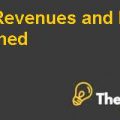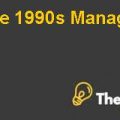
Question 3: What role does management judgment play in determining the lessee right-to-use asset and lease liability amounts?
Answer:
If we talk about the Management Role in making judgment about the lessee right-to-use asset and lease liability amounts, following points must be considered:
- The management must be able to identify the need to enter into the leasing arrangements.
- If there is a need to enter into a leasing arrangement rather than to buy the asset, the company needs to evaluate different leasing companies providing leasing arrangements.
- Once the lease arrangements have been identified, the management must assume the nature of Lease agreement, whether to go for a Finance lease or an Operating lease.
- After the nature of the Lease agreement has been identified, the management must make sure that they must comply with the requirements of International Financial Reporting Standards.
- As the new Exposure Draft has been issued, now it is the responsibility of the management to follow the initial measurement and recognition criteria of the lease as stated in the Exposure Draft.
- Management must make a judgment as per the requirements of the Draft regarding the recognition of “right-to-use” asset and recode the leased asset in the Statement of Financial Position.
- Management has to calculate the Lease Rental payments, discounted by the Lessee’s Incremental Borrowings Rate or Rate the lessor charges to lessee.
- Recognized the Annual Lease Rental Expenses in the Statement of Comprehensive Income.
- Management must make sure that the Leased asset must be amortized against the life of the asset or against the life of the lease term, whichever is earlier.
- Amortization expense must be recognized in the Statement of Comprehensive Income.
- It is the duty of the management to ensure that the proper disclosure have been included in the notes to the accounts, one of the most important elements of Financial Statements, regarding the Leased Assets.
Question 4: how might the Exposure Draft’s proposed lessor accounting influence, if at all, the lessor’s preferences for particular lease provisions in the BonneSante leases?
Answer:
After the issuance of the new Exposure Draft, the lessor too has to follow the particular lease provisions, which are as follows:
At the start of the lease agreement, the lessor shall evaluate whether the lease is in accordance with the performance obligation or the de-recognition approach on the basis whether the party providing asset (lessor) retains associated risks or benefits with the leased asset whether:
O During the lease term; or
O After the lease arrangements with the ability to earn returns or lease rentals or by selling the underlying asset.
To assess whether the lessor retains the vulnerability to risk and return, he shall apply the Performance Obligation Approach.
O According to Performance Obligation Approach, the lessor must recognize the right to receive lease rental and lease liability.
O The lessor shall not de-recognized or eliminates the leased asset from their Statement of Financial Position.
Following are items that must be recognized in the Statement of Profit and Loss by the lessor:
O Rental income for the right to receive lease rentals.
O Interest income as the liability satisfied.
O Any increase or decrease in the value of the lease liability as a result of revaluation of the expected amount of the contingent rentals and expected payments under term option residual value guarantees when the lessor satisfies that liability.
- Impairment loss, if any, on the right to receive lease payments after the careful Impairment testing;
O And most importantly, the lessor shall recognize lease income as their revenue, if just in case it arises from the ordinary course of lessor’s activities.
If in case the lessor does not retain the vulnerability to the risk and benefits with leased asset, the lessor shall apply the recognition approach to the lease. Once the recognition criteria has been selected, one shall not change it after the inception of the lease arrangements.
At the start of the lease arrangements, a lessor shall measure the following:
O The right to receive the lease payments as the sum of the present value of the future lease payments, discounted by the lessor’s rate and initial direct cost incurred by the lessor, if any.
O The carrying value of the underlying asset...............................
This is just a sample partial case solution. Please place the order on the website to order your own originally done case solution.












